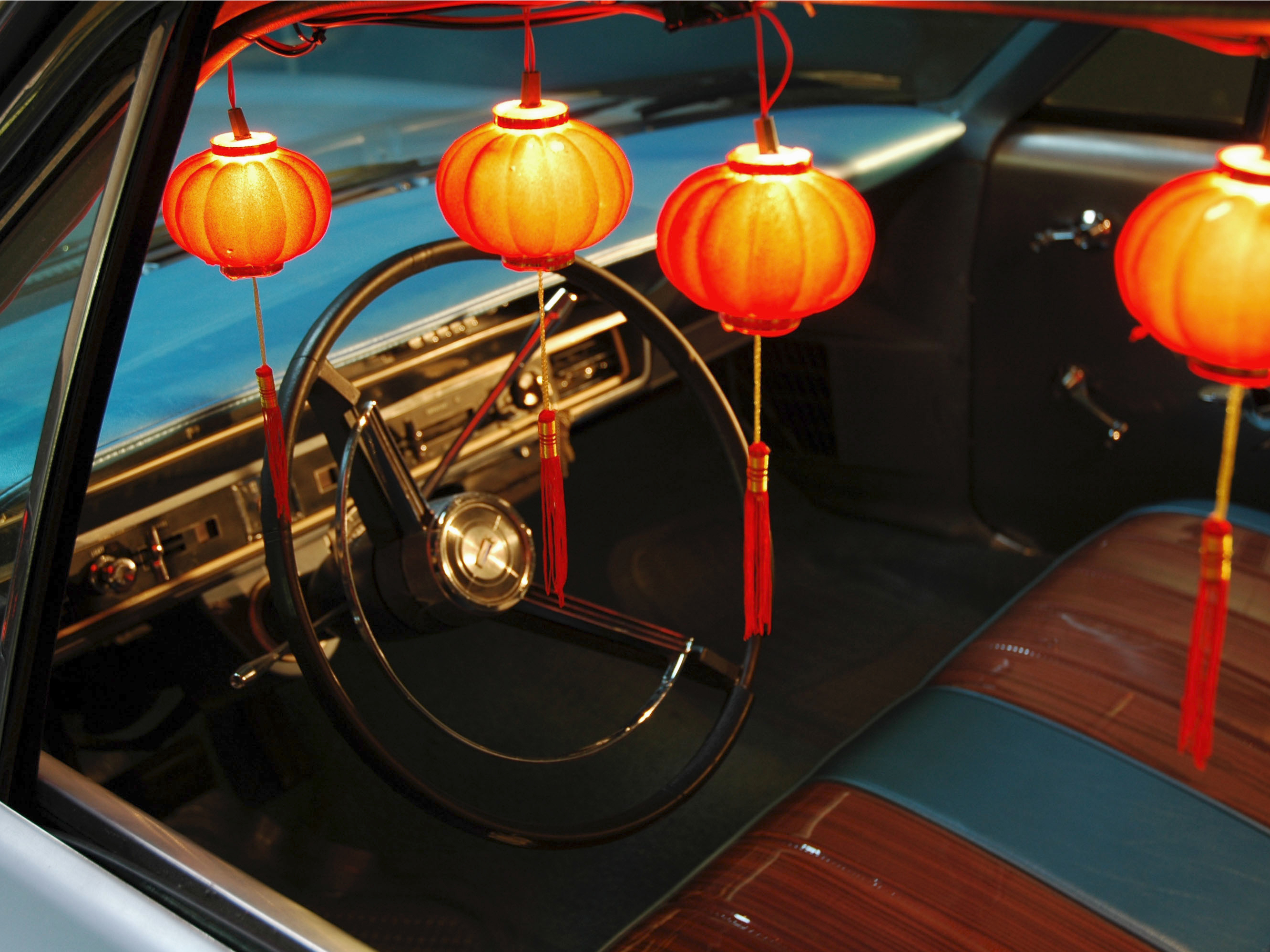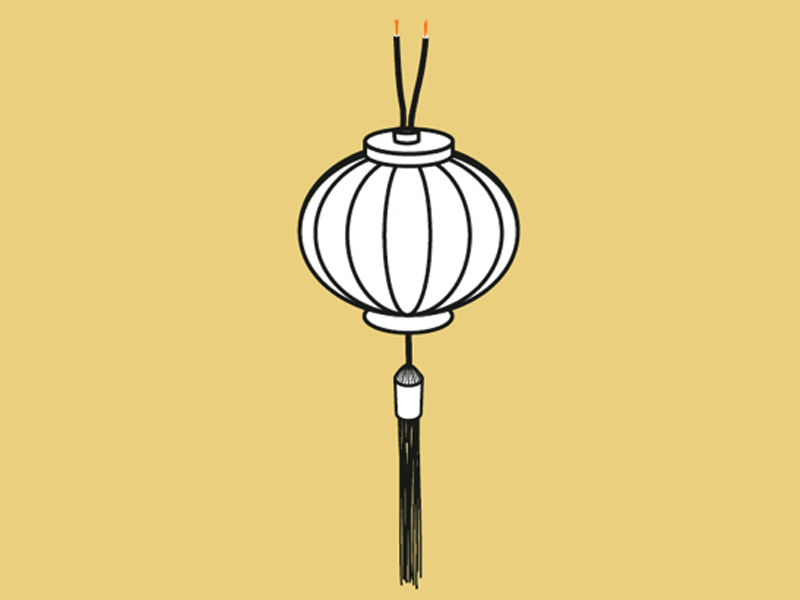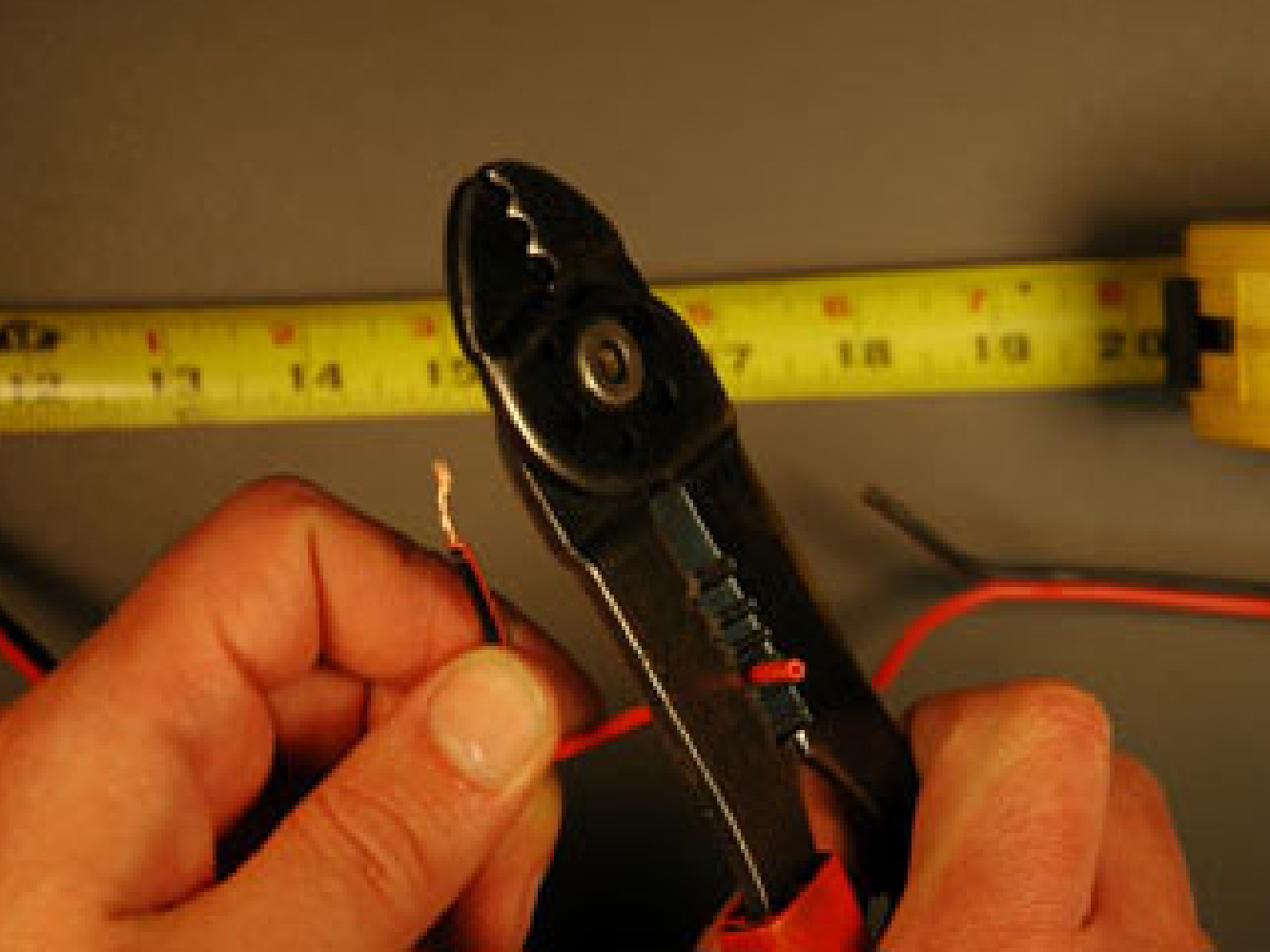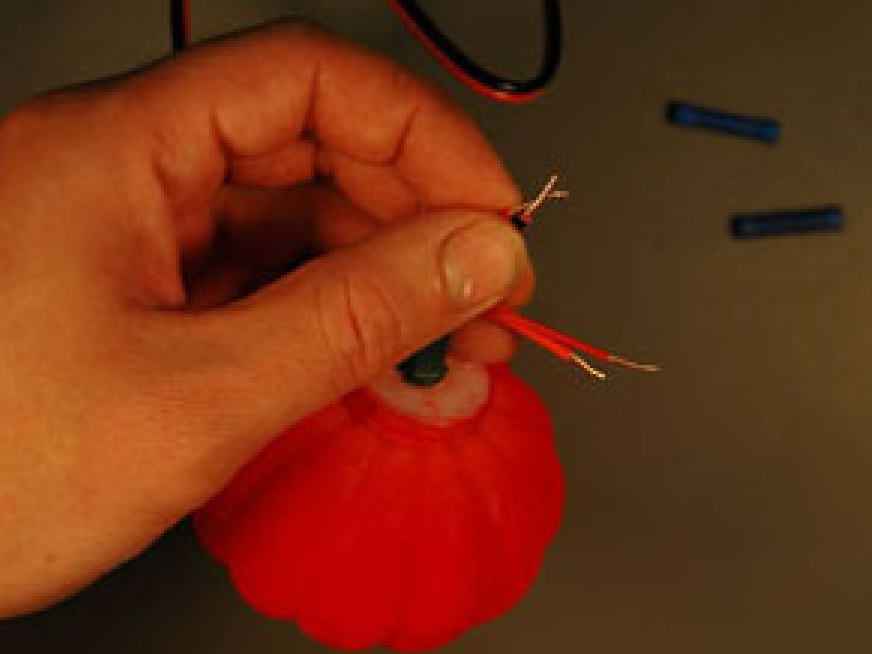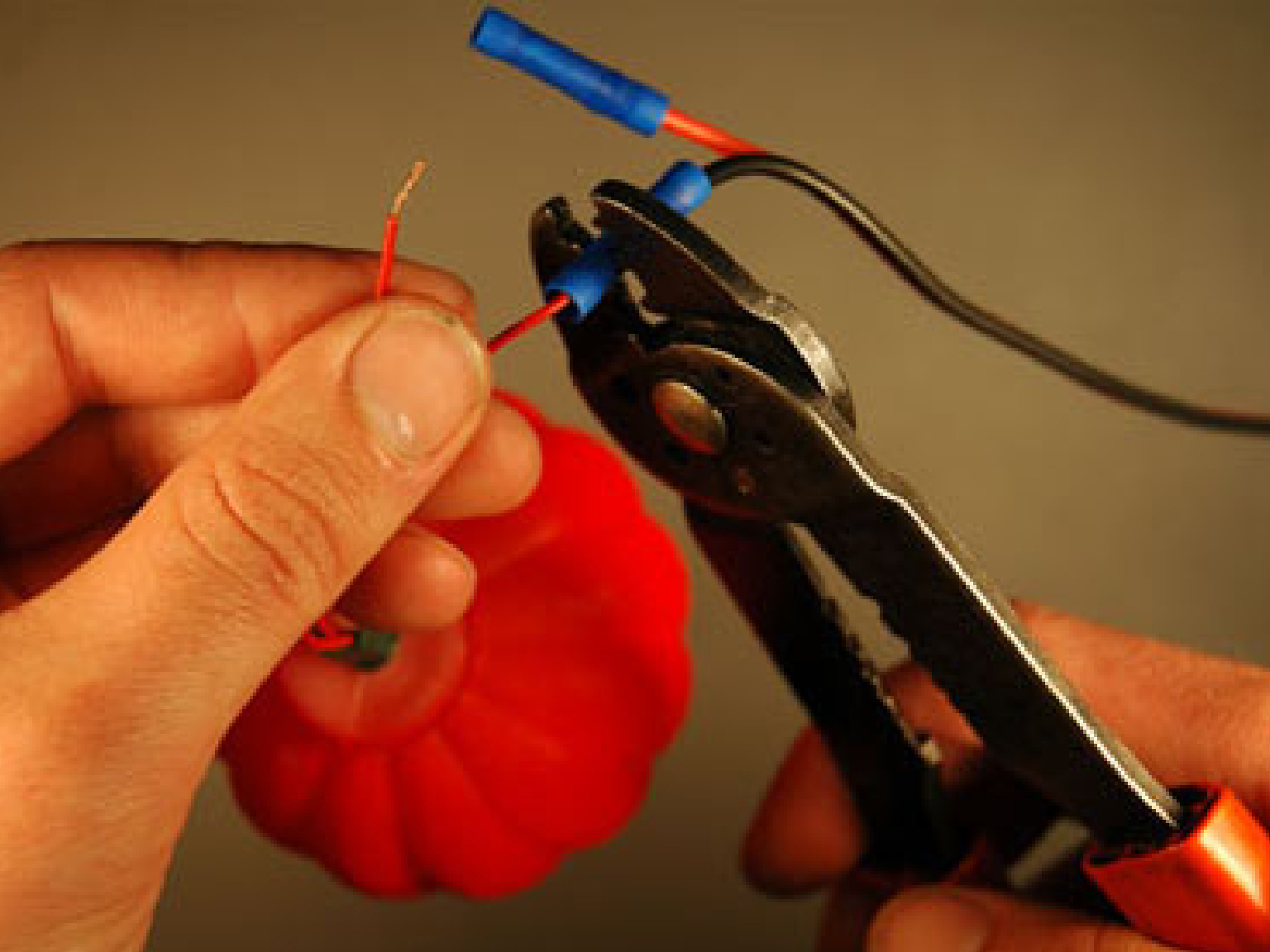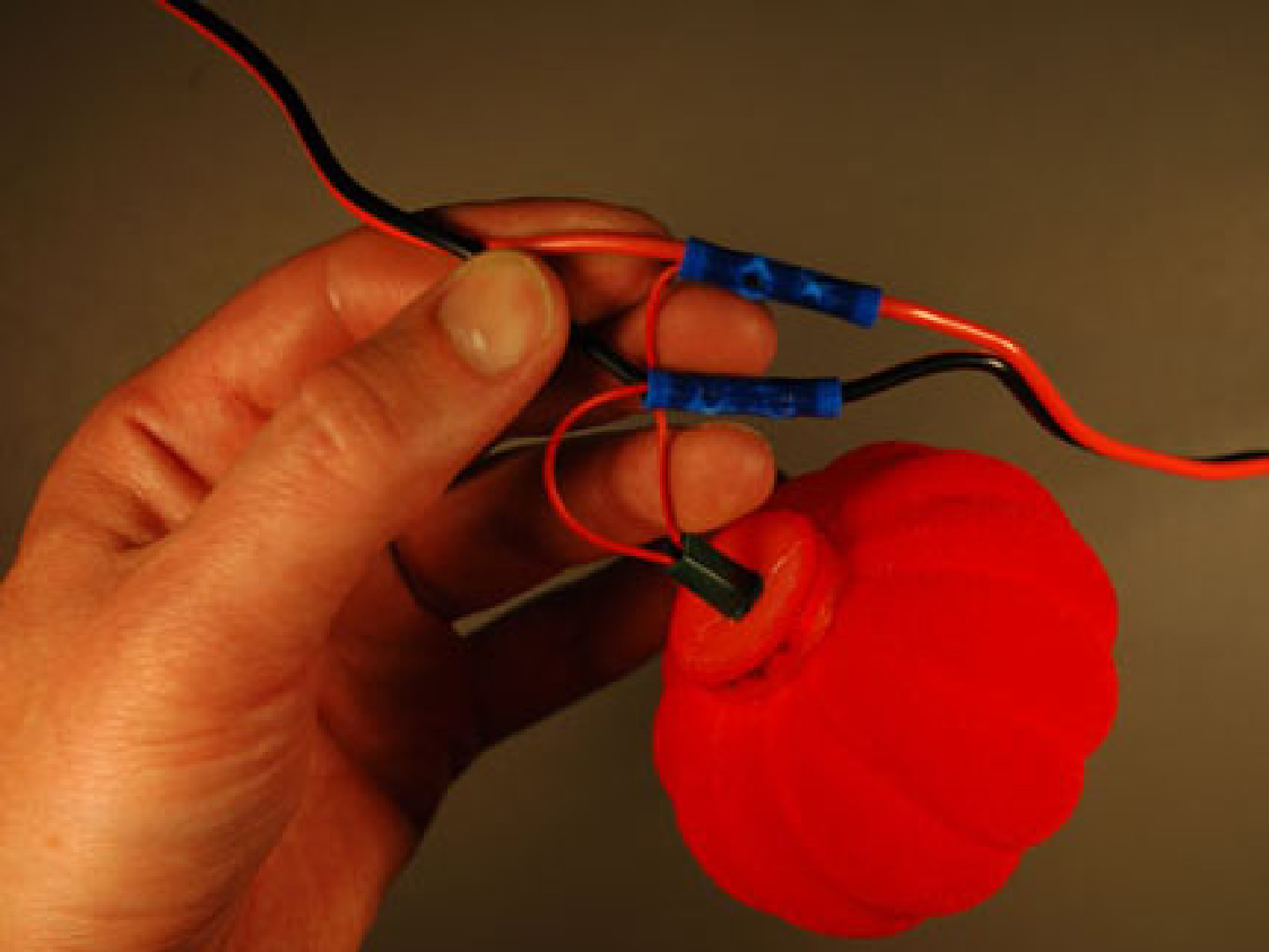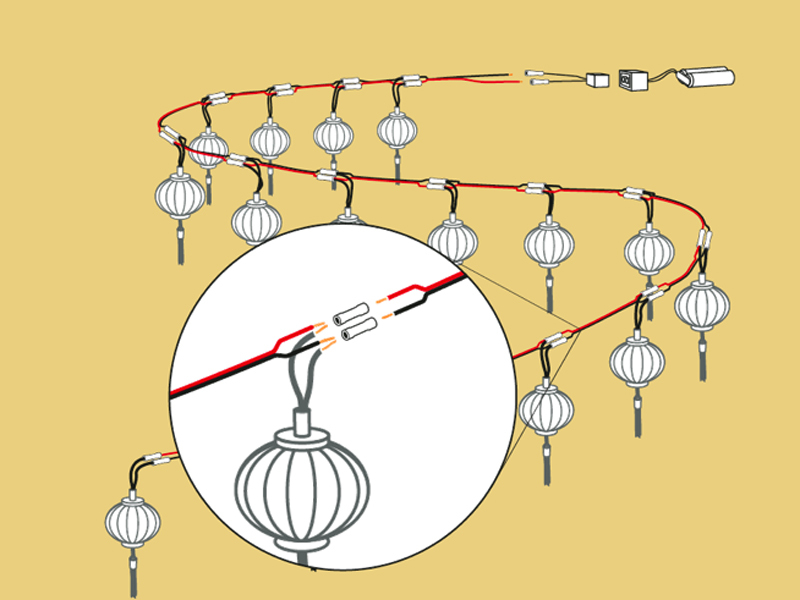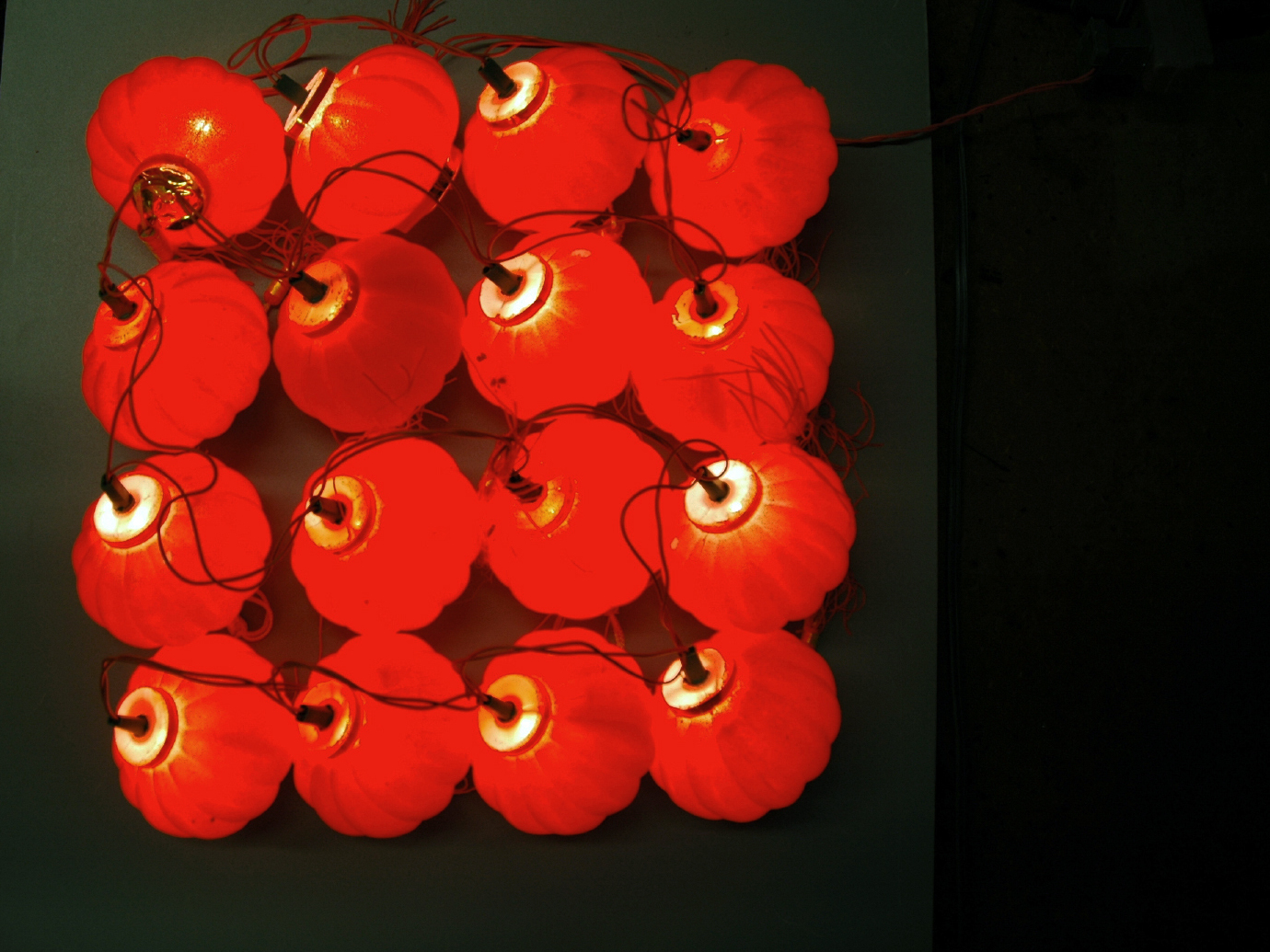Swanky picnics, exotic tailgate parties, or cherry blossom backyard springtime wonderlands all benefit from a set of Chinatown lanterns – but what if there’s not an electrical outlet within extension cord reach? What if you want your pup tent, phone booth, or shopping cart to look like an opium den? Convert to battery power!
RadioShack sells a battery for a remote control car and a conector repair kit that are perfect to convert a string of lanterns to be 100% mobile. Rather than soldering the whole mess together, use butt splice connectors that crimp the wires together with a single tool – a combo wire cutter, stripper, and crimper.
Will you install your lanterns as 70s-style lowrider headliner pom-poms? I hope so. I did.


